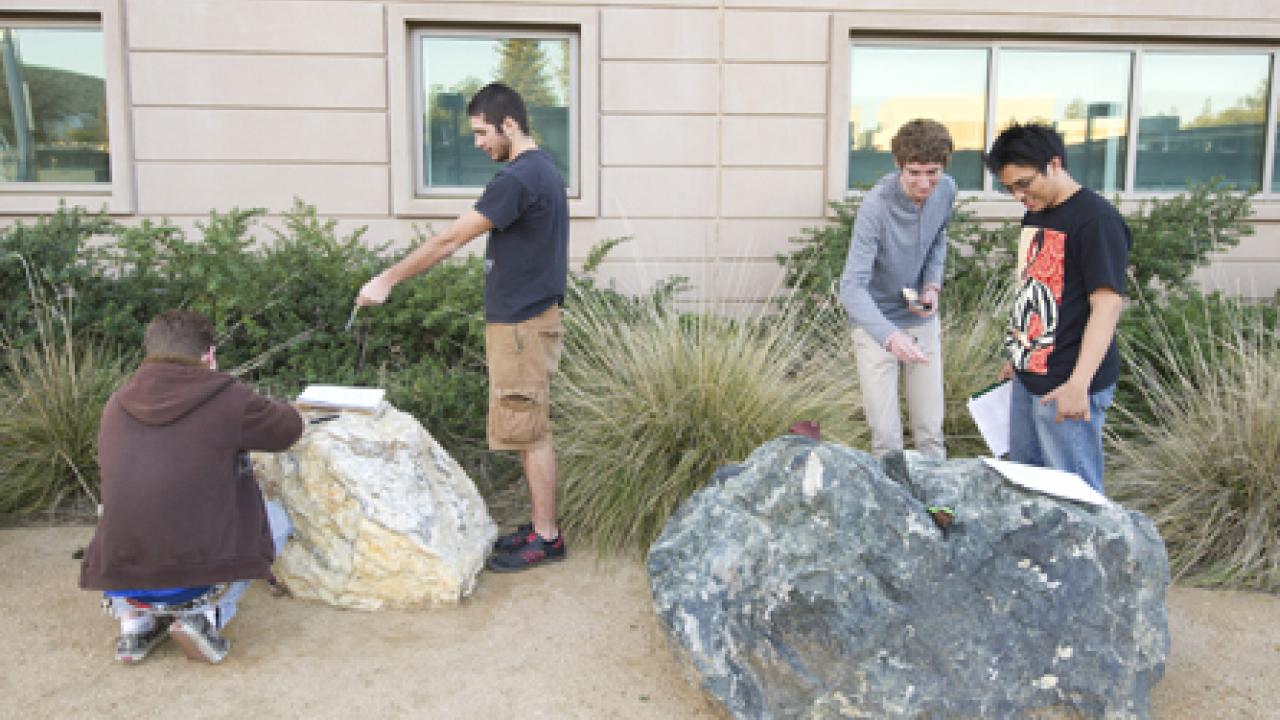UC Davis’ Public Garden Initiative is gaining national attention from such luminaries as Peter Raven, the internationally respected botanist, president emeritus of the Missouri Botanical Garden and a recipient of the National Medal of Science.
He is coming here next week to help in the visioning process for the UC Davis Arboretum and Public Garden, which naturally takes in our world-class arboretum, but also includes the rest of the central campus.
The noted conservationist is also set to deliver a Storer Lecture: “Saving Life, Saving Ourselves,” free and open to the public, at 2 p.m. Wednesday, Jan. 18, in Ballroom B at the Conference Center. Read more about the speaker.
The Public Garden Initiative expands on the arboretum’s GATEways Project (GATE stands for Gardens, Arts and The Environment) — which since its launch 4½ years ago has had all the hallmarks of a “public garden” except the name.
Yet that is exactly what it is, a public garden, described by Raven as a guide “to the kind of sustainable, rich and beautiful world that we would like to build together for the future.”
The arboretum, celebrating its 75th anniversary in 2011-12, is the garden’s centerpiece — featuring organized plant collections and curated records, and an organization that manages those elements in furtherance of the arboretum’s mission: to support UC Davis teaching and research.
But now, in transitioning to a public garden, the arboretum is forging an even greater connection with the university’s academic mission, with more discipline-themed gardens; new building identification signs, which will have graphics to depict what is being studied inside the building; and enterprise-scale, applied research.
“We are telling the UC Davis story, in a visitor-friendly way,” said Assistant Vice Chancellor Kathleen Socolofsky, arboretum director.
She leads the project with Bob Segar, assistant vice chancellor of Campus Planning and Community Resources.
“We’re not turning the whole campus into the arboretum,” Segar said. “We’re taking what the arboretum does so well — in community engagement, programming and sustainability — and bringing it to the rest of the campus landscape.”
Gateways to academia
The arboretum launched the GATEways Project with the acknowledgement that UC Davis’ south entry — with all of its new development — had become the campus’s new front door, and that the arboretum could develop a number of “gateways” to usher people into the academic side of things.
For example, giant boulders are featured in the new Geology GATEway Garden, alongside the Earth and Physical Sciences Building, not far from the arboretum waterway. The specimen boulders from around California are used in undergraduate courses.
The geology garden is part of the University GATEway, introducing the public to the important work of UC Davis scientists.
The University GATEway lies roughly in the middle third of the arboretum. The City Arts GATEway, in the eastern third, takes in the buildings that house the departments of art, music and theatre and dance, and connects the university to downtown Davis; while the Arboretum Discovery GATEway, in the western third, connects with the Health Sciences District.
A “discovery center” is proposed just off Interstate 80, at the Old Davis Road exit — and would be the first building that people came upon when driving into the central campus.
But while the center may be a ways off, several other GATEway components are taking shape now. They include the California Native Plant GATEway Garden, now being designed for the east end of the arboretum; and Nature’s Gallery Court, which is under construction near the Storer Garden.
The Nature’s Gallery ceramic mural, a community project of the Art-Science Fusion Program, debuted in 2007 at the U.S. Botanic Garden in Washington, D.C., and now, finally, the mural is getting a permanent home on the Davis campus.
The GATEways plan also calls for gardens tied to animal science, watershed sciences and music, all along the arboretum. And, now, under the Public Garden Initiative, the rest of the campus is ripe for discipline-themed gardens, too.
And, following the arboretum’s model of recruiting volunteers, the campus community — students, staff and faculty — will be invited to help create and care for the new gardens.
To help make our public garden grow, so to speak, the university has consolidated all of the units with responsibility for grounds and landscaping — putting them in Campus Planning and Community Resources, part of Administrative and Resource Management.
This integration brings about administrative efficiencies, in furtherance of the Organizational Excellence Initiative, and enables all kinds of cross-disciplinary efforts toward creating a more welcoming campus and one where sustainable landscaping saves water and money.
For example, Grounds and Landscape Services will soon plant native grasses — like what you see in the arboretum — in the La Rue Road median, in place of the high-maintenance turf. Similar projects are planned elsewhere.
Online
Earlier coverage
“Campus ‘gateway’ to swing open: Arboretum, arts and environment are key themes behind new entry,” Dateline UC Davis (April 12, 2007)
“Campus botanical exhibit heads to nation’s capital,” Dateline UC Davis (April 26, 2007)
“Nature’s Gallery in nation’s capital,” Dateline UC Davis (June 22, 2007)
Media Resources
Dave Jones, Dateline, 530-752-6556, dljones@ucdavis.edu
